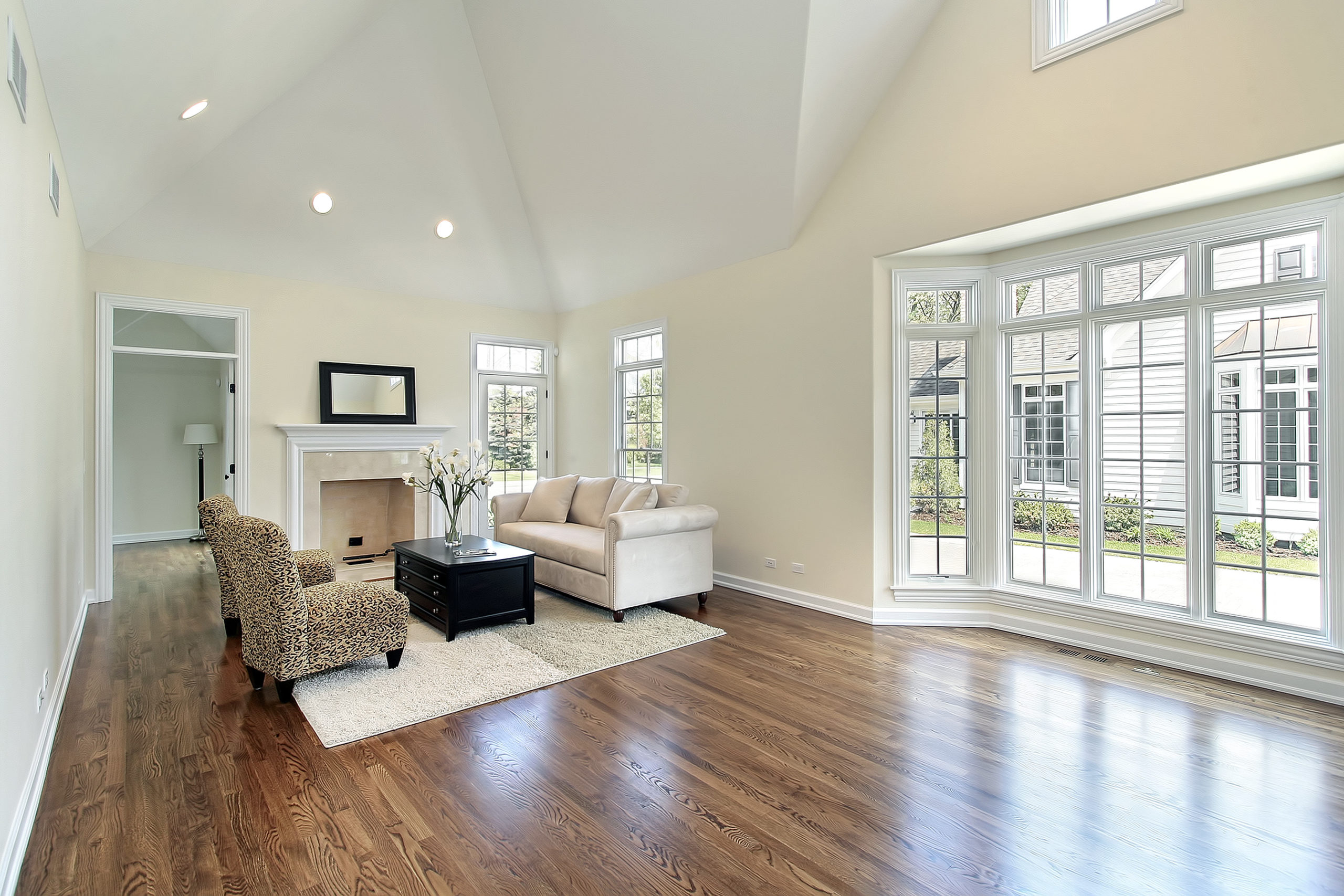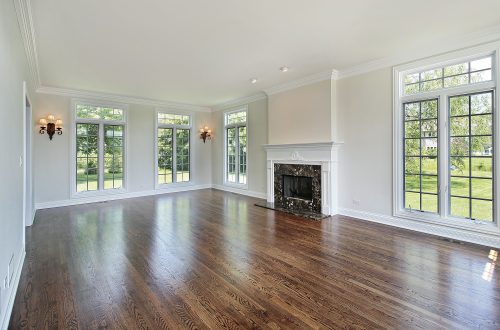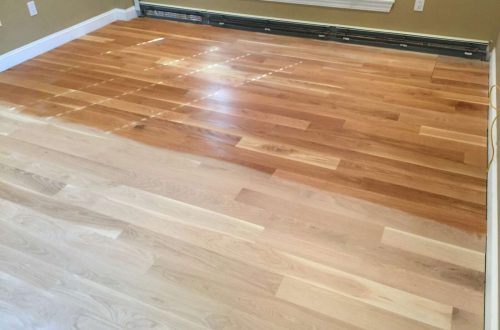Water-popping Hardwood Floors
We had written a blog post on this about a year ago but I thought it was necessary to touch on this subject again. Click the link to read the original post – Water-popping-What it is, and why it should be considered
Water-popping hardwood is a step taken during the sanding and refinishing process before the stain is applied. Essentially, water popping hardwood is done by applying an even layer of water onto the hardwood. There are a few different application methods and neither is right nor wrong but more so the method in which your refinisher feels more comfortable using. Some applications include wiping the floors with a wet towel, using a bucket of water and applicator whether a mop, or misting the floors with a portable mister that you pump with air and then have a steady flow of lightly misted water- once the floor has been misted you wipe it into an even layer to cover the floor. It is very important that an even layer of water is applied. Otherwise a blotchy stain will result.
Water popping hardwood floors reopens the graining/pores of the floor after sanding has taken place. Wood is Hydroscopic. Meaning that wood retains and expels water and moisture. Even after harvesting, milling and kiln drying, wood is essentially alive and will react to the moisture content of it’s environment. When water is applied to hardwood, the pores will swell. This allows the stain to penetrate further into the floor’s natural pores. The result of often a richer and deeper color stain. This is especially true for dark colored stains.
You will often hear professionals use the term grain popping or popping the grain. These are interchangeable terms for water popping.
Water popping hardwood is not always needed. There are many instances where it is actually best NOT to water pop. If you decide on a light color or natural stain color, there is no need to water pop because the graining of the hardwood will pop through. Many species do not take well to water popping and the flooring can actually become blotchy even if the water popping was done correctly. One species where this tends to happen on is Maple hardwood.
Exotic Hardwoods
For many exotics species, you purchase this floor for its natural coloring and pattern- not many clients opt for staining exotic hardwoods. Thus, it is not necessary to water pop since they are going to be keeping the flooring natural. Many times, the oil content in exotic hardwoods is high and therefore you SHOULD NOT water pop. Often times, you will have to wipe exotics with denatured alcohol in order to reduce the amount of oil so it does not interfere with the polyurethane or coating adhesion. Teak (Cumaru) is a perfect example of how exotic species are oily and should, be all means, NOT be water popped.
The natural oil content in oak is far less than in many exotics which is why water popping works so well on Oak flooring.
You can not/should not use mineral spirits or paint thinner to water pop your hardwood floors. The most popular brands of paint thinner and mineral spirits are petroleum based. It will not dry like alcohol or water. It also leaves a residue which will have not only an effect on the floors but also the stain and polyurethane. Mineral spirits and paint thinner are made specifically to clean oil based paints. Meaning that they breakdown the oil in the paints to remove them from surfaces. If it does this to paints, it can not be good on your floors which have natural oils. Your flooring needs its natural oils and they have been kiln dried in a specialized way to keep their oils so that the integrity of the hardwood is not jeopardized. Do not put anything on your raw hardwood that can negatively impact your floorings natural components.



5 Comments
Pingback:
Pingback:
Pingback:
Pingback:
Pingback: